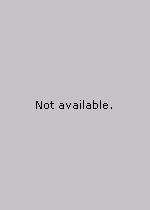| 2/2002 - 8 |
Practical Aspects of using Three-Phase PWM CS RectifiersStevan GRABIC, Vladimir KATIC |
| Extra paper information in |
| Click to see author's profile in |
| Not available online | Views: 1,487 |
Author keywords
DC Motor Drive, PWM Rectifier, Harmonics
References keywords
References keywords will be displayed on the next page reload.
About this article
Date of Publication: 2002-04-02
Volume 2, Issue 2, Year 2002, On page(s): 41 - 44
ISSN: 1582-7445, e-ISSN: 1844-7600
Digital Object Identifier: Not assigned
Abstract
A modern power electronic device has not only to meet all demands of technological process it drives but also of power quality standards limiting harmonic currents it injects in, and reactive power, it draws from the AC system. Among the power converters aiming at doing so, three-phase PWM current source rectifier has found its place, being mostly used in DC motor drives and battery charging. The aim of this paper is to investigate performance of the rectifier in transitional periods, considering line current spectrum, and to determine its influence on the selection of passive line side filter parameters while trying to meet a power quality standard. |
| References | | | Cited By |
On-line references are not available - see the PDF file if available.
Faculty of Electrical Engineering and Computer Science
Stefan cel Mare University of Suceava, Romania
All rights reserved: Advances in Electrical and Computer Engineering is a registered trademark of the Stefan cel Mare University of Suceava. No part of this publication may be reproduced, stored in a retrieval system, photocopied, recorded or archived, without the written permission from the Editor. When authors submit their papers for publication, they agree that the copyright for their article be transferred to the Faculty of Electrical Engineering and Computer Science, Stefan cel Mare University of Suceava, Romania, if and only if the articles are accepted for publication. The copyright covers the exclusive rights to reproduce and distribute the article, including reprints and translations.
Permission for other use: The copyright owner's consent does not extend to copying for general distribution, for promotion, for creating new works, or for resale. Specific written permission must be obtained from the Editor for such copying. Direct linking to files hosted on this website is strictly prohibited.
Disclaimer: Whilst every effort is made by the publishers and editorial board to see that no inaccurate or misleading data, opinions or statements appear in this journal, they wish to make it clear that all information and opinions formulated in the articles, as well as linguistic accuracy, are the sole responsibility of the author.



